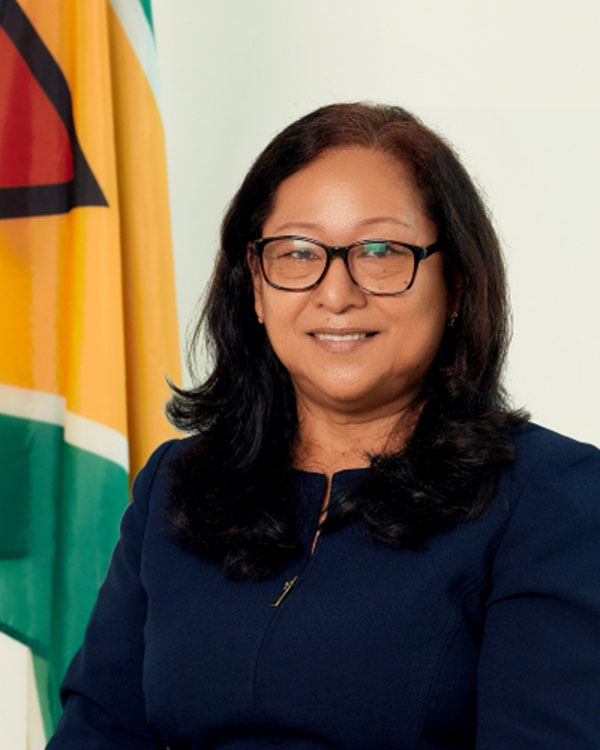By Milton Grannum
Two hundred and forty-two Amerindian communities benefited from 4.7 billion disbursed from the US$750 million earned from US oil company Hess under the Low Carbon Development Strategy (2030) LCDS for 2024.
In addition some $35,000,000 was also disbursed to small settlements.
Amerindian Affairs Minister Pauline Sukhai made the disclosures on Wednesday during her ministry’s end of year press conference. She stated that in addition to the 4.7 billion, accommodations were made to give “Five Star, Eye Lash, Big Creek, Fitzburg, Calcuni, and 47 Miles some additional sums to supplement what they already received on the presidential grant”.
When asked about any reports of irregular spending by villages, she stated that while the Ministry is only responsible for signing off on the funds and does not have oversight of the spending powers, there have been reports without tangible evidence of Toshaos keeping monies belonging to the villages.
“Yes, we have had instances where we have heard with no tangible evidence that Toshaos are keeping the money and not giving the treasurer. That’s a recurrent complaint. There’s a little bit of grey area there that maybe we have to look at later on, because the Toshao is a signatory to the bank account. The village has the authority to spend or expend based on a village sustainable plan. That village sustainable plan is established through a consultative process at the village level. Spendings have oversight through a local committee from the village. So the village itself, community members form part of the oversight committee, or financial and management oversight committee, and that committee polices the spending by the village council. So if they have a guest house and they want to do the foundation, what they’ll do is take a tranche. Toshaos may be the man keeping the money, because he signed for the money and so on. And then he will take it upon himself, because he has this document approved by the village, and go and purchase, comes back, doesn’t give an account to the village, to the village council, or to the oversight. So we’ve had cases where we’ve had to provide guidance, and also to advise on how they should operationalize the system of expending the funds, the decisions to expend the tranche, and the reporting to the oversight, the sharing of information”, she said.
The government had been criticised by members of civil society for not observing Free, Prior and Informed Consent (FPIC) for the involvement of Amerindian communities in the Hess-financed carbon credits programme. FPIC should have prevailed at the village level and not at the level of the National Toshaos Council as argued by the government.
When asked by Stabroek News about this, Sukhai stated that “Free, Prior and Informed Consent is articulated at the village level by the village council and the people. Again, I want to say that (no FPIC) is not true, because in the very initial LCDS, the framework of the LCDS document was first launched in an Amerindian community for the first series of nationwide consultations. It was launched in an Amerindian village, and so the Amerindian villages and villagers always get the first go at what will finally be refined, reviewed, refined, and presented as a national strategy. And similarly so, the expanded LCDS 2030 has gone through that same policy, the process and policy, whereby the Amerindian villages had a first go at scrutiny of the expanded document, of being involved in examining it, and being involved in criticizing it, being involved in making recommendations, both orally, written, and some even did virtual or electronic recommendations and comments”.
Under the Presidential Grants programme some $395,100,000 was disbursed. Projects done by those communities according to Sukhai included opening of farm lands, investments in food security amongst others.
“We’ve had more than probably 40 projects on food security across the country, and I can say that in Yarakita, they ventured on into opening up farms for the villagers. Some Region 1 villages continued ginger farming, while others ventured into livestock rearing, and the procurement of farming tools, etc.
Additionally, there has been the fencing of farms, supporting the fencing of playfields, construction of catwalks, footpaths, jetties, and Stellings. There was also support in tourism, construction of bridges and mess halls in various communities.
Citing the spending and developments as being “a very successful year in the implementation and investment on the Presidential Grant” she also highlighted the development of fuel depots, extension of schools, purchasing of vehicles and investments in land and river transportation etc.
Under the presidential grant programme the villages are responsible for the implementation of their prioritized projects which they would submit. The ministry would assist in providing technical support to the village council and also to monitor the implementation of the investments.
